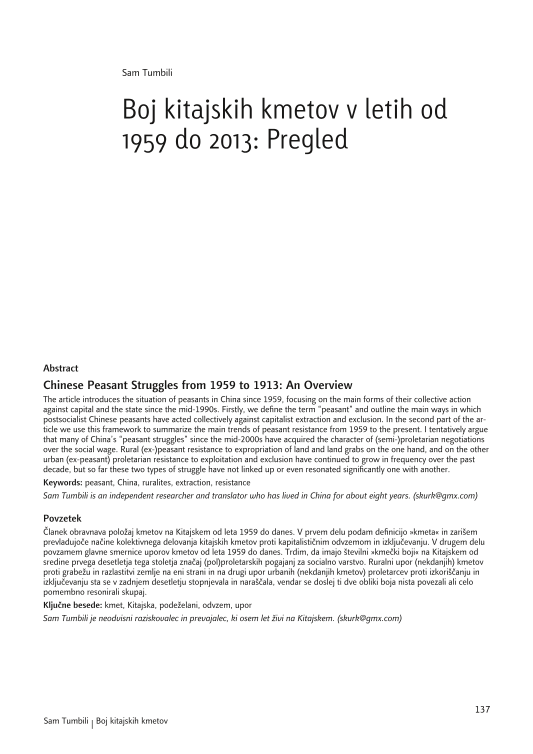The article introduces the situation of peasants in China since 1959, focusing on the main forms of their collective action against capital and the state since the mid-1990s. Firstly, we define the term “peasant” and outline the main ways in which postsocialist Chinese peasants have acted collectively against capitalist extraction and exclusion. In the second part of the article we use this framework to summarize the main trends of peasant resistance from 1959 to the present. I tentatively argue that many of China’s “peasant struggles” since the mid-2000s have acquired the character of (semi-)proletarian negotiations over the social wage. Rural (ex-)peasant resistance to expropriation of land and land grabs on the one hand, and on the other urban (ex-peasant) proletarian resistance to exploitation and exclusion have continued to grow in frequency over the past decade, but so far these two types of struggle have not linked up or even resonated significantly one with another.




